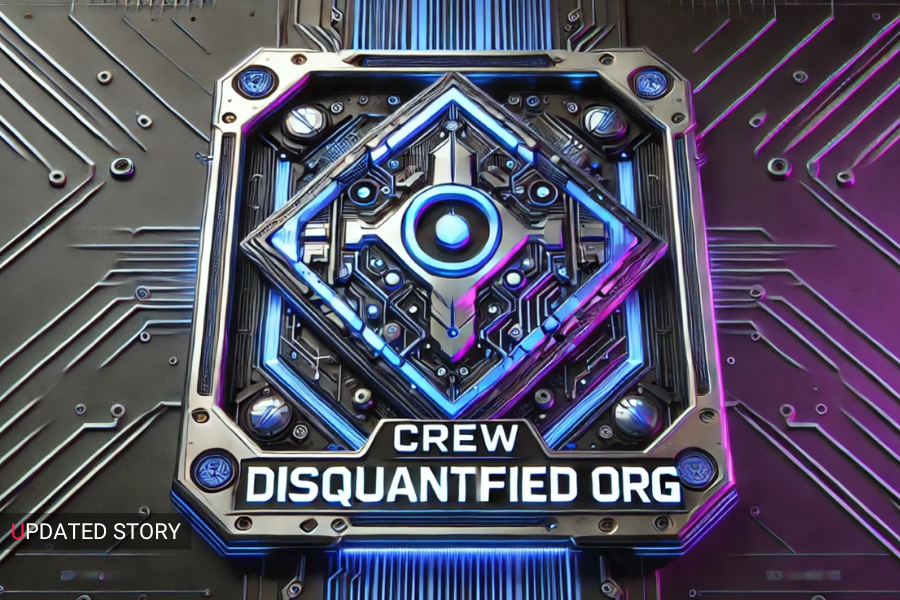When you hear the term “Crew Disquantified Org,” it might sound like a new buzzword or a complex concept. However, the term essentially refers to the operational structure and philosophies of certain organizations that focus on team dynamics, unstructured or decentralized organizational models, and the adaptation of roles and skills according to real-time needs rather than rigid hierarchies. This article delves into what “Crew Disquantified Org” means, how it’s reshaping businesses and organizations, and its potential impact on the future of work.
What is Crew Disquantified Org?
At its core, a “Crew Disquantified Org” is an organizational structure that emphasizes flexibility, adaptability, and a focus on outcomes over fixed roles. The term “disquantified” in this context refers to a move away from traditional quantifiable metrics used to define roles, job descriptions, and team expectations. This type of organization often rejects the conventional rigid structures of corporations, opting for more fluid, adaptable teams that can scale up or down based on the task at hand.
Think of it as a sports team where each player’s role is not predetermined but instead is adapted dynamically based on the game’s demands. The crew concept is drawn from the world of collaborative work, where each member contributes their unique skills to achieve a common goal. Instead of having fixed job titles, individuals in a “Crew Disquantified Org” are given responsibilities that may change based on their expertise, interests, and the immediate needs of the organization.
The Rise of Disquantified Organizations
Organizations have long been structured around hierarchies and set roles, but as industries evolve, the need for a new approach has become apparent. The rise of remote work, the gig economy, and a shift toward decentralized collaboration have given way to more flexible, agile forms of working. The traditional model of a workforce with defined roles, departments, and fixed career ladders no longer aligns with the fast-paced, ever-changing needs of many industries.
Several key factors have contributed to the rise of disquantified organizations:
Technological Advancements: With technology enabling greater communication, collaboration, and automation, traditional management systems can feel outdated. Teams no longer need to be physically present in one location, and tasks can be more efficiently distributed based on real-time needs.
Globalization and Remote Work: With businesses increasingly expanding into global markets, and the rise of remote workforces, organizations need more flexible structures. The need for cross-border collaboration has made it crucial for teams to adapt quickly to new challenges and capitalize on a global talent pool.
Agility and Innovation: In a fast-moving business environment, companies must be able to pivot and adapt quickly. Rigid structures and outdated hierarchies slow down decision-making. Disquantified organizations are designed to foster innovation by allowing teams to operate with a higher degree of autonomy and flexibility.
The Gig Economy and Freelancing: As freelancing and short-term projects grow in popularity, traditional employment structures are becoming less relevant. Many workers are choosing to work on a project-by-project basis, requiring companies to rethink how they organize teams.
The Benefits of Crew Disquantified Org
Organizations embracing this model experience several significant advantages. These benefits not only improve operational efficiency but also enhance employee satisfaction and innovation.
Flexibility and Adaptability One of the biggest benefits of a crew disquantified organization is its ability to adapt quickly. With fluid roles and structures, teams can quickly reconfigure to meet the needs of a project or shift in the market. This adaptability allows organizations to remain competitive and respond to external changes without the burden of traditional bureaucracy.
Increased Collaboration and Innovation Since roles are less rigid and more dynamic, individuals have the freedom to collaborate across functions and disciplines. This fosters a culture of innovation, as employees can contribute ideas based on their skills and interests, rather than being confined to a specific job description. The cross-pollination of ideas from diverse areas often leads to new approaches and solutions.
Enhanced Job Satisfaction With the ability to take on different tasks and work in various capacities, employees often feel more engaged in their work. This sense of autonomy can increase job satisfaction, as individuals feel they have more control over their career trajectory and the impact they have within the company.
Cost Efficiency Traditional organizational structures require a large management layer to oversee departments and teams. In contrast, a crew disquantified model reduces overhead by flattening hierarchies and focusing more on self-managed teams. This can lead to reduced administrative costs and more streamlined decision-making processes.
Fostering a Culture of Trust By adopting a less structured organizational model, crew disquantified organizations build a culture of trust. With less micromanagement and more autonomy, employees are empowered to make decisions, take ownership of their work, and contribute meaningfully to the organization’s goals. Trust is critical in any organization, and when employees feel trusted to do their work, they tend to perform at their best.
Challenges of Crew Disquantified Org
While the benefits of a crew disquantified organization are clear, this structure does not come without its challenges. The lack of clear roles, responsibilities, and leadership hierarchy can create confusion if not managed carefully. Some potential downsides include:
Lack of Clear Direction In the absence of traditional top-down leadership, there can be a lack of clarity on decision-making. Teams need to be proactive and have a shared understanding of goals and priorities. Without clear direction, efforts may be fragmented, leading to inefficiencies or misaligned objectives.
Difficulty in Performance Measurement Traditional performance metrics may not be as effective in a disquantified organization. Without fixed roles, it can be challenging to evaluate individual contributions, especially if employees are taking on a variety of tasks. Organizations must develop new ways to measure performance that align with the flexible nature of the work.
Risk of Burnout The flexibility of a crew disquantified organization can lead to blurred boundaries between work and personal life. If roles are constantly shifting and individuals are expected to wear multiple hats, employees may struggle to maintain a healthy work-life balance. Burnout can become a real concern if workloads are not managed effectively.
Resistance to Change Not all employees are comfortable with the idea of a flexible, unstructured work environment. Those accustomed to traditional roles and responsibilities may find it difficult to adapt to a model that requires a high degree of autonomy and self-management. Organizations must invest in training and support to help employees transition into this new way of working.
The Future of Crew Disquantified Org
As the workforce continues to evolve, so too will the way organizations operate. The crew disquantified model represents a shift toward more dynamic, agile, and collaborative environments. It’s a model that is likely to gain further traction in industries such as technology, marketing, and consulting, where innovation and adaptability are essential to success.
Several trends will influence the future of crew disquantified organizations:
Artificial Intelligence and Automation AI and automation will play a significant role in reducing administrative burdens and enabling teams to focus on higher-value work. As repetitive tasks are automated, organizations will rely more on human creativity, strategy, and collaboration, which aligns perfectly with the crew disquantified model.
Decentralized Workforces The rise of remote work and decentralized teams will continue to fuel the growth of disquantified organizations. With employees spread across different locations, organizations will increasingly rely on flexible, project-based teams that can be assembled and reassembled as needed.
Focus on Employee Well-being The success of crew disquantified organizations will depend on how well they manage employee well-being. Organizations must prioritize work-life balance, mental health, and stress management to ensure their employees thrive in an environment of constant change and adaptation.
Conclusion
The concept of a Crew Disquantified Org represents a revolutionary shift in how organizations structure their teams, roles, and operations. By prioritizing flexibility, collaboration, and adaptability, these organizations break away from rigid hierarchies and embrace dynamic, outcome-driven models. While this approach offers numerous advantages such as increased innovation, enhanced job satisfaction, and cost efficiency, it also presents challenges like unclear direction, difficulty in measuring performance, and the risk of burnout. As technology, remote work, and employee expectations continue to evolve, the Crew Disquantified Org model is poised to shape the future of work, making organizations more agile, responsive, and innovative.
FAQs
1. What does “Crew Disquantified Org” mean?
A Crew Disquantified Org is a flexible organizational structure that moves away from rigid job roles and hierarchies, instead focusing on adaptable teams and real-time collaboration.
2. How does a Crew Disquantified Org differ from traditional organizations?
Unlike traditional organizations with fixed roles and top-down hierarchies, a Crew Disquantified Org allows employees to take on dynamic roles based on skills, interests, and business needs, fostering agility and innovation.
3. What are the benefits of adopting a Crew Disquantified Org model?
Key benefits include increased flexibility, better collaboration, higher job satisfaction, cost efficiency, and a stronger culture of trust.
4. What are the challenges of implementing a Crew Disquantified Org structure?
Challenges include potential confusion due to a lack of clear leadership, difficulties in performance measurement, risk of burnout, and resistance from employees used to traditional work models.
5. Which industries can benefit most from the Crew Disquantified Org approach?
Industries such as technology, marketing, consulting, and creative sectors, where innovation and adaptability are critical, can benefit the most from this approach.
6. How does AI and automation impact Crew Disquantified Orgs?
AI and automation help streamline repetitive tasks, allowing organizations to focus more on human creativity, strategic thinking, and collaboration, which aligns well with the Crew Disquantified Org model.
7. Will this organizational model become the standard in the future?
While not all industries will adopt it, the Crew Disquantified Org model is gaining traction in agile and innovative sectors. As work trends continue to evolve, more companies may explore its potential to enhance productivity and employee engagement.





